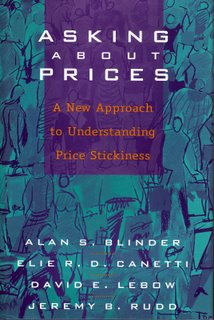 Avid readers of this blog may recall my previous post on the subject of price changes. The “Economic Focus” column in last week edition of The Economist also looked at the subject of price changes and price stickiness.
Avid readers of this blog may recall my previous post on the subject of price changes. The “Economic Focus” column in last week edition of The Economist also looked at the subject of price changes and price stickiness.The Economist understands the importance of pricing from both a macro and a micro –economic perspective: “Shifts in prices are like the traffic lights of an economy” it says.
The article looks at how economists on both sides of the Atlantic are looking at the volatility of prices and the velocity of their change. For example, two of these economists, Bils and Klenow, have obtained 1995 – 1997 data for 350 items in the US Bureau of Labour CPI basket to calculate that these prices changed at least every four or five months.
Some other interesting findings:
* Sales account for 87% of changes in the price of clothes, 67% of furniture price changes and 58% of processed food price changes;
* Price changes in Europe tend to be bigger than in US (average increase of 8%, average decrease of 10%), and;
* High inflation leads shops to raise prices more often (now there’s a self-fulfilling prophesy if ever I heard one).
What the article does not explore, and which pricing professionals would be particularly interested in, is (a) the reasons for the price changes (competition, costs) and (b) what the impact of those changes was (revenue growth, market share objectives).
Nevertheless, this new wave of research (see sources at the bottom of The Economist story) adds to the work of Alan Blinder, his team, and their seminal 1998 book “Asking About Prices”




